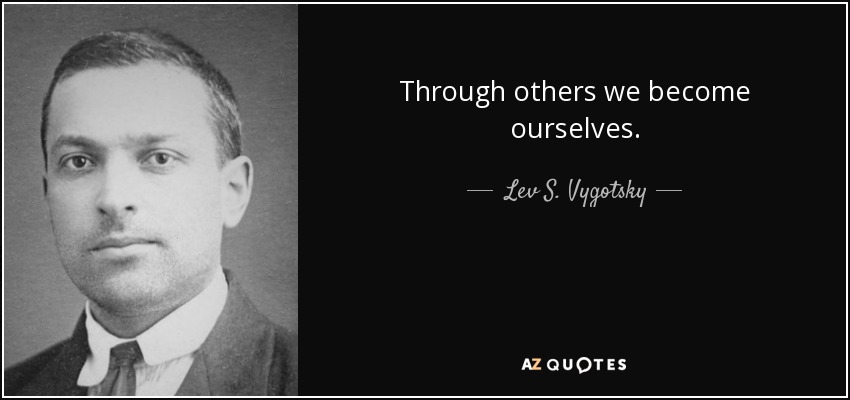4. Recognize that children and families are part of support systems; that services develop and operate within communities, cultures, and governance including regulatory frameworks.
Demonstrate an understanding that children and families are part of systems., that services develop and operate within systems, and childcare is part of the larger community social services system.
Demonstrate an understanding that children and families are part of systems, that services develop and operate within systems, and childcare is part of the larger community social services system.
Support systems are available to us all, educator, child, family, in a number of different ways.
I believe a child is surrounded with support in a contextual view. According to Lev Vygotsky “a focus on ways adults convey to their child about their beliefs, values, customs, and skills of their culture are fundamental aspects of a child’s development in a cultural context.” From here the scaffolding technique of teaching unfolded which is a teaching technique and tool I embrace and model in supporting children in my centre. It is also a technique I like to share with my children’s families to enhance family connection and develop their relationships into a deeper level.
“Urie Bronfenbrenner also promoted a contextual view of development. Bronfenbrenner portrayed the developing child as embedded in a series of complex and interactive systems, sometimes referred to as an ecological theory. He divided the environment into five levels around the child:
- Microsystem – consists of the people and objects in a child’s immediate environment that strongly influence development and support.
- mother, father, siblings, extended family, child care, church, neighbourhood play area, peers, school.
- Mesosytem – Microsystems themselves connect to create the mesosystem. The child’s microsystems and mesosytem systems emotionally interconnected for the child.
- Exosytem – includes social settings that a child might not experience firsthand but they still influence development and support.
- Extended family, neighbors, community services, parent’s workplaces, mass media, family friends.
- g. A mother’s work environment is part of her child’s exosystem because she might pay more attention to her child when her work is going well and less attention when she’s under work-related stress.
- Macrosystem – the broadest environmental context which includes the subcultures and cultures in which the microsystem, mesosystem, and exosystem are embedded. Every generation develops their own macrosystem as cultures are dynamic and constantly changing.
- attitudes, beliefs, and heritage of the culture.
- Chronosystem – emphasizes that development takes time, changing influences and environments can alter a child’s experiences, development, and I strongly believe the child’s support system and relationships” ( Kail. R,V., & Zolner. 2018. p. 10).
Through understanding a child and their family, their culture and background I feel I can then support them in a deeper level. I can encompass their pace of life into support systems within our centre and when needed in our centres programming.
Regulations through our government creates consistency and quality care for a child and families in regards to developing, learning, playing, safety, and harmonizing together in support: BC Early Learning Framework (I like to call it ELF), BC Play Today, Community Care Licensing Regulations, Standard of Practice – Active Play, Standards of Practice – Safe Play Space, The B.C. Handbook for Action on Child Abuse and Neglect, and Truth and Reconciliation.
With a connection and a valued relationship with a child and their family it makes it easier to communicate with them, when a time arises, to reach out to the community for support for the child and their family needs.
Providing respect, support and confidentially for the child and family is extremely important in our centre daily. Building trust between relationships takes time and effort; however the reward of helping and supporting a child and their family is magical, positive, and empowering.
Examples of some government services and community support systems, programs in our Comox Valley for child and their families:
BC Affordable Childcare Benefits – Government operated
- Subsidized child care fees
BC Child Care Fee Reduction Initiative Program – Government operated
- To reduce and stabilize parents child care fees
Child and Family Services – Government operated
- Child Protection
- Family Services
- Guardianship
- Youth Justice
- Child and Youth Metal Health
- Child and Youth Special Needs
Comox Valley Child Development Association
- Autism Services
- Aboriginal Services
- Early Intervention Services
- Adult Services
- Children and Youth with Special Needs Services
- Early Years Community Outreach
- Supported Child Development
Comox Valley and Family Services Association
- “Creating Calm” Child and Youth Anxiety support group
Health Link BC – Government Operated
-
- Health Topics
- Healthy Eating
- Physical Activity
- Mental Health & Substance Abuse
Island Health Comox Valley
Mental Health & Addictions Services
- Mental Health
- Substance Abuse
Young Parent Program
- Linking young parents with community support and resources
- Health Services
- Education Support
- Child Care

Examples of Documentation: Direct
ECC 163 The Families We Meet Scenario Assignment
ECC 168 Health Promotion Assignment Brochure – Mindfulness Meditation
ECC 116 Hospitalization Handout – Children and Stress Assignment
ECC 163 Young Parent Program Brochure
Examples of Documentation: Indirect
Parent and Co-worker letter Jenna Phipps August 2020
Building Bridges Through Understanding the Village Experiential Workshop
Early Learning for Every Child Today
Truth and Reconciliation – Call to Action Booklet 2020
References
BC Affordable Childcare Benefits. Retrieved from: https://www2.gov.bc.ca/gov/content/family-social-supports/caring-for-young-children/child-care-funding/child-care-benefit
BC Child Care Fee Reduction Initiative Program. Retrieved from: https://www2.gov.bc.ca/gov/content/family-social-supports/caring-for-young-children/running-daycare-preschool/child-care-operating-funding/child-care-fee-reduction-initiative-provider-opt-in-status
Child and Family Services. Retrieved from: https://www2.gov.bc.ca/gov/content/family-social-supports/data-monitoring-quality-assurance/find-services-for-children-teens-families/sda-courtenay
Comox Valley Child Development Association. Retrieved from : https://www.cvcda.ca/services/
Comox Valley and Family Services Association. Retrieved from:
https://www.comoxvalleyfamilyservices.com/
Health Link BC. Retrieved from: https://www.healthlinkbc.ca/
Island Health Comox Valley. Retrieved from: https://www.islandhealth.ca/our-locations/health-protection-environmental-services-locations/comox-valley
Kail. R,V., & Zolner. 2018. Children: A Chronological Approach. Fifth Canadian Edition. Person Canada Inc. Don Mills. Ontario.
Young Parent Program. Retrieved from: https://tntls.com/programs/young-parent-program/